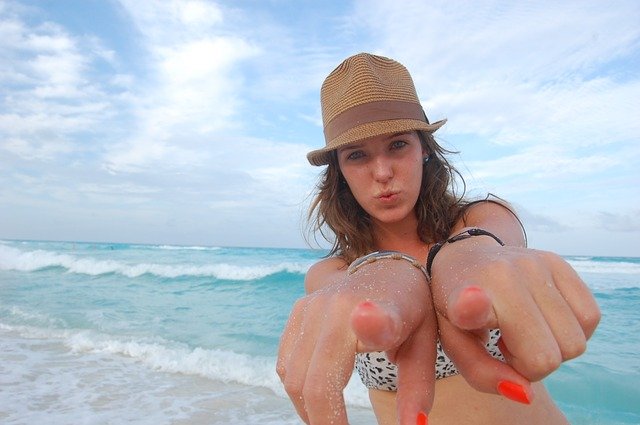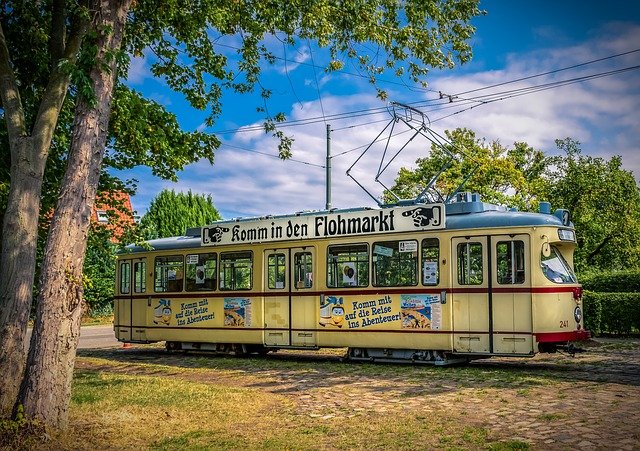Table of Contents
Travel is a highly segmented market and there is intense competition in the market. With travellers demanding more customised and highly niche packages for holidaying, travel brands have to ensure that the right message reaches the right audience and at the right time. Astro strategist Hirav Shah offers a complete package to sort out and resolve the many issues that haunt the travel industry and make businesses competitive and successful.
Humans are smitten by wanderlust. The more prosperous people become, the more they crave to discover this beautiful planet. Of course, there are varieties of travellers. Some like adventure, some like sight-seeing, some are culture freaks, some want to explore the unknown and some like to visit popular tourist destinations and tick them off their bucket list.
There was a time when top travel agencies like SOTC or Cox & Kings or Thomas Cook were preferred options for travellers. But like in every sector, times have changed, people want variety and customised packages to suit their budget and requirements.
Brands like SOTC, Cox & Kings are still on top of the list when one travels internationally, but there are a lot of start-ups that operate through word-of-mouth or online publicity. Branding is important in the travel industry and it helps reach out to target audiences who are willing to splurge money to have a ‘memorable experience’.
Brand identity is important in attracting customers as the travel industry is a highly competitive sector. Customers compare prices and all the extra deals that hotels and resorts offer constantly. This leads to a need for differentiation in the segment to send clear-cut messages to varied customers.
Let’s consider a few examples of how certain brands have created a niche for themselves. One name that is extremely popular these days is AirBnB. This is a platform to book a room or entire house from a host, who has put up their place on offer in a particular city. In a recent move, which took many of his fans by surprise, Shah Rukh Khan and his wife Gauri Khan have put their Delhi home on AirBnB. This made a lot of headlines at the time and gave enough publicity for AirBnB. The brand mostly relies on its customers, both guests and hosts for its share of publicity.
Through story-telling and providing handy information to guests, AirBnB has successfully managed to move the brand away from the business of accommodation and towards experiencing a place like a local.
Next, one can take the example of Iceland, which after an unfortunate volcanic eruption was off the tourist list for a very long time. But the Icelanders took this in their stride and took to robust promotional activities and rebranded the tourism efforts to the nation. Local tourists and prominent Icelanders were used to promote the Nordic nation.
The tourism board’s efforts led to millions in extra tourism revenue, web hits and shared stories. The tourism board has over the years used various humorous, informative and inspiring video campaigns including Honorary Islander, Ask Guomundur, The Iceland Academy, etc, to build awareness of the destination.
Another example of bang on branding is the Westin chain of hotels. Over a period of time, they have realised that the travellers are increasingly focused on wellness along all parts of their journey. In order to appeal to the market of mindful travellers, they have used brand building to help nurture a loyal customer base.
So, they have built their brand as a haven for travellers where they can rest, eat, work and move well. They have aligned their website branding and language to reflect this.
In India, some of the popular tourism brands include:
Thomas Cook
SOTC
Club Mahindra Holidays
Expedia
com
Goibibo
Makemytrip
Now, let’s check out how branding helps tourism industry:
As a marketing tactic, branding personifies the tourism industry. It gives values, voice, looks and personality to your brand which will make it more relatable to the guests and other travellers. The most important point is that a well-defined branding strategy will help you reach out to the right audience and leave a lasting impression on them.
Stop over-reliance on OTAs: The first step is to stop relying heavily on Online Travel Agents or OTAs like Tripadvisor, as the customer tends to identify with Tripadvisor more than your brand. This could boomerang in the long run.
Branding gets more bookings: A unique brand voice and a beautiful brand design will help make your business stand out as the best option for a safe and unforgettable experience.
Branding improves recognition: Logo forms an important part of branding. Travellers remember your name, but your logo as well. So while browsing a website, reading emails or seeing Facebook ads, they’ll be able to recognise the business instantly.
Branding makes you memorable: Branding is not just about a slogan and a logo. It’s a complete package. It’s a visual, emotional and tangible experience that you create for the travellers. Once the connection is established, travellers remember you long after the trip and this means loyal customers.
Branding increases your value: Brand equity is the value of your brand name. A striking name creates a niche for you in the market and boosts further expansion.
Create a brand story: Well, this is common for all industries and so it is with the tourism It’s passion that creates a business. Note down all the points that made you start your brand and then diligently build a compelling brand story. The pointers will not only guide your business decisions, but they will also act as reference points for future action. Think of these: How did you start your travel agency? Where did you get the idea? How different is your company from competitors? What does your business strive to do? Etc.
Identify your target audience: We have made it clear at the beginning, identifying your travellers is important as people have different choices these days. It makes sense to build your branding depending on your target audience. For example, if you have a craft beer bike tour, then millennials are bound to be attracted to it. If you have random themes, then there is bound to be a disconnect.
Align with your destination brand: In today’s times, it is also important to align with a destination Let’s take the example of Paris. It promotes itself as a city of love. The couples who head to Paris have a certain image of the city and come with plans in alignment with what the city has on offer. The idea is to merge your brand image with the image of the destination.
Finding your brand voice and tone: It’s important to have a brand voice suiting the situation and the audience that a brand is targeting. For example, the tone can be stern when asking for payments and joyful when the bookings are done.
Give your brand a makeover: Visual elements contribute to brand recognition. So work on logo, typography, colour palette and imagery. Logo is what is seen on websites, social media, merchandise, promotional materials, etc. Hence, the design has to be simple, memorable, timeless and accurately symbolise your travel agency’s mission and culture.
Typography: Fonts come with personality traits. Serif fonts come across as reliable and mature, while modern fonts like Impact, Rockwell give off a bold and progressive vibe.
Colour palette: Colours have an emotional impact on people. For example, green is natural, blue means trust, red means passion. So you might want to have the right mix of colours to make the travellers feel a certain way.
Imagery: Pictures and videos that you put on your site are very important as pictures inspire travellers. It must be in keeping with your brand image and identity.
Be consistent on your website:
a) Make sure to create an about us page, as this will help draw discerning travellers to your site, based on your mission and values.
b) Use relevant keywords: Sprinkle them throughout the website including page titles, headers, body text, meta descriptions, image alt-text and URLs.
c) At all times, remember brand voice: Keep your voice consistent in all material you have written. If possible, maintain a blog and make sure the travellers get the right message.
d) It’s important to provide an online booking system that doesn’t lead to a separate domain and allows for some customization.
A travel brand could be local or targeted at a world audience. Or you could be a brand looking to reinvest itself, following the initial launch. Astro strategist Hirav Shah has a well-thought out plan of action for your branding and rebranding:
For good business growth and future prospects, astro strategist Hirav Shah says it is important to have the necessary ‘luck’ in the personal chart of an individual. However, apart from that, there are a variety of factors that push forth ‘luck’ in business. The name of the business, its logo, the partner’s luck, etc, all determine the success of a business, he shares.
Hirav Shah insists that whatever hard work one puts in or whatever talents one uses to put in smart work by strategizing and implementing those strategies in terms of advertising, marketing, sales, HR, production or service… things have to move smoothly and seamlessly.
According to astro strategist Hirav Shah, that is called the ‘luck’ of the company. So, if the structure of the company or organisation is proper, it helps in utilizing your potential and growth in a productive and positive manner.
Simply ponder:
How does food taste without salt?
How does one feel wearing ill-fitted garments?
How can a footballer ace without proper field?
Similarly, in business, if the structure of the organization is great (ie, business name, great partners, correct registered and administrative address, logo, web-print-digital presence, brand name, etc), by seeking the help of an astro strategist, a business can make and execute decisions within a perfectly timed framework to maximise success.
Here are the 7 factors that astro strategist Hirav Shah considers before giving a road map for branding and rebranding:
Name of the organisation: Don’t go by the famous line — What’s in a name? However, when it comes to branding, it’s all in the name. Astro strategist Hirav Shah will help you name your organisation or brand or product in sync with numerological and astrological calculations. Look at brands like SOTC, Thomas Cook, etc – they bring out ads or social media inputs that directly target buyers almost on a daily basis. They reach out to customers through various platforms, but the message is unique and consistent.
Correct partners: Checking the compatibility, strengths and weaknesses of all partners and administrators is crucial as one weak campaign can mean loss of valuable customers for travel sites, which operate amidst high competition and highly segmented markets.
Percentage of shares of all partners: Hirav Shah ensures that each partner share is correctly balanced, so there are no disputes or disagreements in the long run.
Registered address and administrative address: They should be astrologically compatible with the name of the organization and key people in the company.
Logo of the organisation: We have already seen how important the logo of a travel company is in the case of various brands like SOTC, Thomas Cook, MakemyTrip, AirBnB, etc. Hirav Shah helps you create and finalize the right logo that reflects your values and attracts the right kind of energy.
Web, print and digital presence: In today’s world, where one needs to be seen and heard on various media platforms, Hirav Shah ensures that your digital, print and marketing collaterals are aligned and in harmony with your brand’s purpose and vision.
Brand: Last, but surely not the least, astro strategist Hirav Shah makes sure that your brand assets are auspicious for the company and have a positive impact on team morale.






















